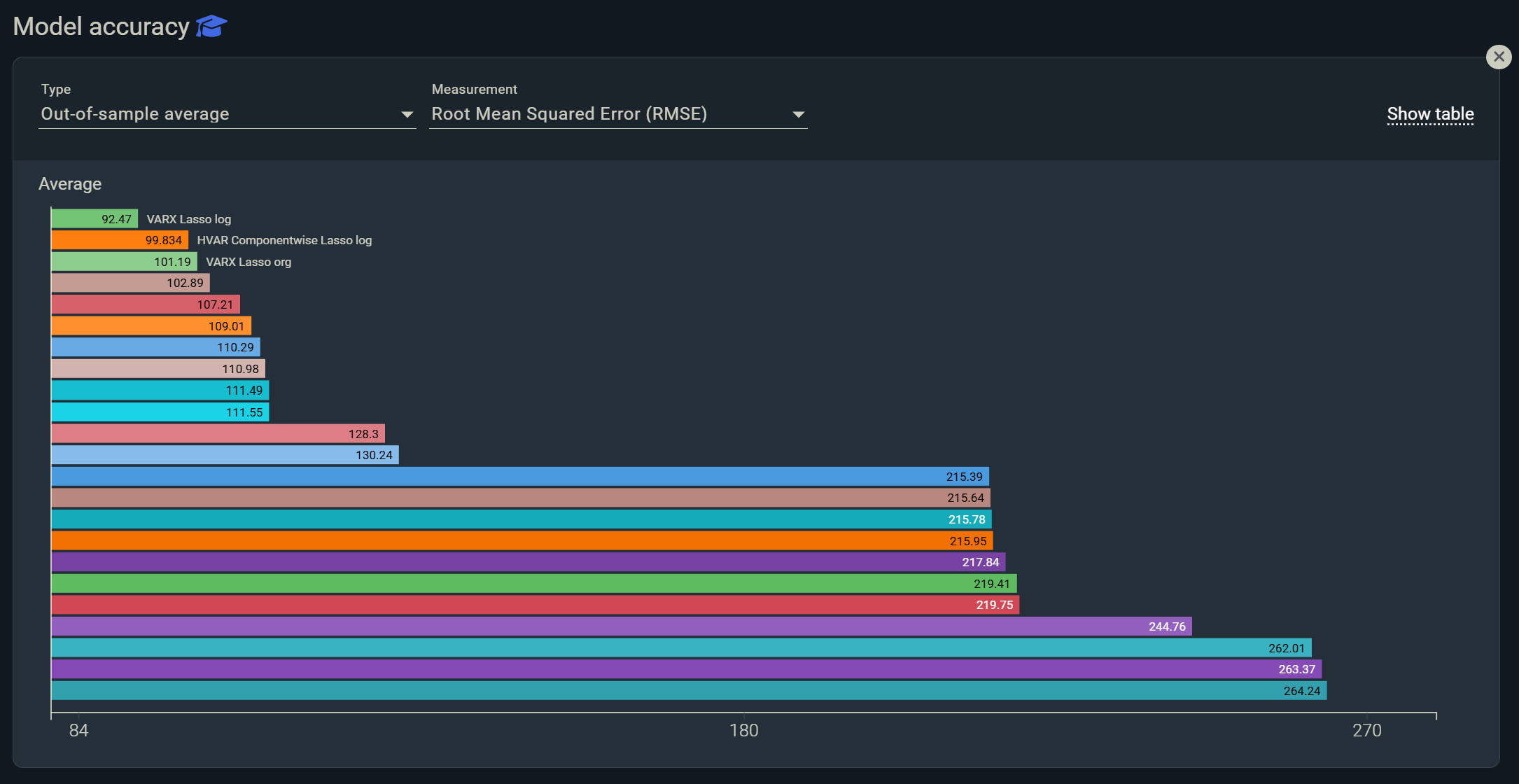The 10 Best FP&A Forecasting Tools for Enterprise Teams in 2025
In today’s rapidly changing markets, “good enough” forecasting is no longer sufficient for enterprise teams. Economic shifts, market dynamics, supply chain disruptions, inflation, and regulatory changes all interact in ways that can throw traditional forecasting off by large margins. The right tool must not just look backward, but understand what’s changing around you, and anticipate how external forces affect your core metrics.
Below are the top ten forecasting tools for enterprise teams in 2025, ranked by how well they integrate external signals, model complexity, usability for large organizations, scenario/what-if flexibility, and track record of improving forecast accuracy. First up: the tool that's setting a new benchmark.
1. Indicio
Indicio stands out for enterprises that want more than standard time-series or driver-based forecasting. It incorporates leading indicators; economic, market-level, industry-specific variables, and uses advanced statistical, econometric, and machine learning models to quantify how those external forces affect internal metrics. This makes its forecasts more robust to macro shifts, policy changes, and market dynamics.
Key strengths
- Automates testing and back-benchmarking of many models (traditional, ML, econometric) so you don’t have to guess which one works best.
- Provides access to external indicators (macro, market) and lets you bring them into forecasting models without having to build everything from scratch.
- Good usability: interface allows analysts and business users to build, compare, explain, and deploy models. Less need for deep coding.
Pros:
- Incorporates external economic/market indicators for sharper forecasts
- Improves accuracy by 40–80% in volatile conditions
- User-friendly interface for analysts and business teams
Cons:
- Not a full-fledged FP&A forecasting tool, instead it focuses on improving aggregated demand and revenue forecasting
- Webbased, requiring access to internet
- Newer to the market compared to legacy tools.
2. Anaplan
Anaplan is a cloud-based platform for planning and performance management, providing capabilities for financial planning, budgeting, forecasting, and analytics. Its model-driven flexibility enables organizations to build tailored plans and scenarios, but the platform comes with a steep learning curve and can be complex to implement. While it delivers robust tools suited to large enterprises, its cost, user experience, and performance may pose challenges for smaller teams or those seeking simpler, more user-friendly solutions.
Key strengths
- Multi-dimensional modeling for complex business planning.
- Scalable enterprise performance management (EPM).
- Collaboration features for large finance teams.
Pros:
- Powerful for large enterprises.
- Customizable for different industries, especially retail and manufacturing.
Cons:
- Steep learning curve – requires extensive training.
- Expensive and time-consuming implementation.
- Weak reporting
- Customer support problems – its users report unhelpful support
4. Workday Adaptive Planning
Strong FP&A capabilities, especially for enterprises with frequent re-forecasting needs. Good scenario functionality, rolling forecasts, and solid user community. Works well when you need agility. It shows up in Farseer’s original list. Farseer
5. Board
Board offers a unified environment combining BI (business intelligence) + forecasting/planning. If your team needs tight alignment between analytics (data exploration, dashboards) and forecasts, Board can help bridge that. The visual modelling, ease of adapting dashboards, and scenario simulation are pluses. Farseer+1
6. Jedox
Jedox is interesting for companies that want a middle ground between full enterprise systems and tools built around Excel. Its strengths include:
- A familiar interface (Excel-like) which helps reduce friction for finance teams. golimelight.com+1
- Good connector/ETL support for bringing in data from various sources.
- Solid for financial planning, budgeting, forecasting with modeling flexibility.
The trade-offs are sometimes around performance/slowness when data volumes grow, or complexity of custom reporting for large hierarchies.
7. SAP Analytics Cloud (or SAP EPM / Predictive Analytics offerings)
For organisations already invested in SAP or with broad SAP landscapes, SAP Analytics Cloud + related predictive analytics tools are strong because of integration, embedded reporting, and access to SAP datasets. Great if you need end-to-end from ERP → forecasting → insight. The downside is that change is slower, sometimes gated by IT, licensing, and integration complexity. (Also appears in Farseer’s list.) Farseer
8. IBM Planning Analytics (TM1)
IBM’s tool is mature, powerful, scalable. Good at multidimensional modeling, large-scale scenario planning. Useful when you have many cost centres, many products, many geographic splits, and you want deep what-if capability. But again, heavier to implement, steeper learning curve, and less lightweight/faster than some newer entrants. Farseer+1
9. Prophix
Prophix (particularly Prophix One) is a good choice for mid-to-large enterprises where you want strong financial performance management without as much of a “build-everything-from-scratch” approach. Its strengths include rolling forecasts, automation of data flows, forecasting, budgeting, planning, and also strong support in report & dashboard building. Less flexible (in some cases) when compared to very model-centric tools. But for many, the trade-off is balanced. Prophix+1



